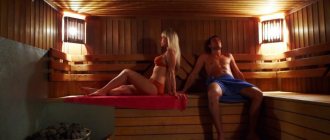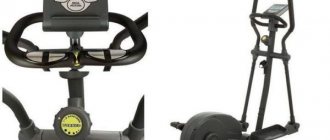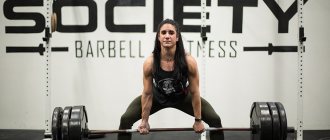Slow fitness Super slow - a technique that has recently been increasingly offered to their clients by fitness centers. The problem is that most novice athletes do not have accurate knowledge about this type of fitness, so they cannot immediately appreciate all its benefits. We suggest you figure out what Super slow is and how effective this unusual type of fitness is.
Slow pace of exercises
Almost every exercise that is presented to beginners is simple and probably familiar to them. A significant difference from the usual workouts in fitness rooms is the pace of execution - it may seem to beginners as slow as possible. Why is this necessary? Ken Hutchins, a talented fitness instructor who created this technique, after several years of observing his students, concluded that the effectiveness of training at the slowest pace possible is extremely high. A person can train for an hour and a half in an intensive mode, for example, using exercises from bodybuilding, and at the same time get the same effect that a fifteen-minute session will give, only in a slower mode. Here the main role is played by muscle tension that occurs with slow effort. This thesis is true and it is very simple to verify this; you need to take a 2-kilogram dumbbell and do one approach at a slow pace.
Easy mastering of a set of exercises
Lifting an apparatus in Super slow fitness, like squats, abdominal swings, and other exercises, should last ten seconds. Descents are performed twice as fast. In order to get the required load, eight slow repetitions are enough. In this case, the target muscle will work out sufficiently. Since any basic exercises are performed at this pace, serious problems with mastering the entire complex most often do not arise. The training is ideal not only for strength training. Slow fitness Super slow is often used when performing regular exercises in aerobics classes. Slow-paced workouts never last too long, usually ending within twenty minutes of starting. Since athletes are required to exert enormous muscle load, the rest must be of high quality - at least two days for the body to fully recover.
Workouts for busy people
It is not surprising that such workouts are especially interesting for busy people who simply do not have time for long periods of aerobics or other fitness activities. In addition, they are perfect for quickly regaining physical shape, since such loads almost completely eliminate the likelihood of any injury. The habitual stereotype of training is changed by slow fitness Super slow. Just one lesson allows the athlete to work out the lower and upper muscle girdles as efficiently as possible. A significant difference from regular training is that there are no breaks between sets. It is also not recommended to hold your breath when performing exercises: you need to inhale and exhale calmly and deeply.
In a programme
The Body & Mind program consists of three parts: warm-up, main part and cool-down. The total duration of the workout is 55 minutes. During the warm-up, the body and psyche prepare for the lesson. Breathing plays a special role here. Breathing practices allow you to get rid of the psycho-emotional stress accumulated during the day and enter a harmonious, balanced state. This alone makes us more energetic and increases the effect of subsequent training. The main part includes the most effective exercises for strengthening the muscles of the lower and upper body and core muscles. Cooling down allows the body to come out of training mode and recover faster and better. To achieve maximum results, it is recommended to exercise at least twice a week for a minimum of three months. How quickly the effect will be noticeable depends on the level of training and individual characteristics. Trainers try to take into account the personal parameters of each student as much as possible in order to achieve the maximum effect from the training.
Pros and cons of Super slow
Surprisingly, this type of fitness is unofficially called “a sport for the lazy.” Despite this, it is suitable for anyone. It is imperative to take into account the athlete’s temperament, as he may resist such a pace of training. If we talk about the advantages and disadvantages that characterize slow fitness, then there are many more advantages. Sometimes athletes are faced with a surprising paradox: with heavy physical activity, an increase in body weight is observed. You shouldn’t be upset about this, since in this case muscle volume increases, and we all know that muscle mass, compared to fat mass, is highly dense. It is worth noting that the result will be much better if the practitioners drink enough fluids and also adhere to a nutritious, balanced diet.
Sleep and fitness bracelets. Guide for Dummies
Rating of this article according to readers:
5
(116)
All modern fitness bracelets and smart watches can track their owner’s sleep. Some devices monitor sleep phases, others display only general information about the degree of mobility. And some support smart alarms and can even measure your breathing quality while you sleep.
But why does a common user need all this information? How accurately do these devices track sleep and which is the best one to choose? Can fitness bracelets or smartwatches help those who suffer from insomnia? And what, in the end, do all these phases and smart alarm clocks mean?
For the last 5 years, I have been periodically researching this topic, testing various fitness bracelets and smart watches, while simultaneously becoming interested in somnology (a branch of medicine dedicated to sleep research - editor's note). And in this article I will try to be as simple and at the same time detailed as possible. answer all the questions posed above.
A few words about sleep. Or what are sleep stages and why track them?
With the growing popularity of fitness trackers, many users have learned about the existence of so-called sleep phases. Naturally, medicine has known about this for about 70 years, but this concept has only recently become fashionable. However, like many other concepts that fitness trackers have popularized, including VO2 max (maximum oxygen consumption), SpO2 (blood oxygen saturation) or heart rate variability, which you can read about on Deep-Review. But what are sleep stages?
We are all sure that at night our body rests, recovering after a working day. And, on the one hand, this is true. But, at the same time, at night the activity of the brain, especially some of its parts, is one third higher than during wakefulness. In other words, our brains are even more active at night than during the day. But its work consists of several stages.
All sleep is divided into two main phases - slow and fast sleep . In turn, slow-wave sleep is divided into 3 more phases, which are scientifically called “first”, “second” and “third” phases. It is worth clarifying that previously there were four phases, but then the third and fourth phases were combined into one.
When darkness falls, our internal clock (or circadian rhythm, to put it more correctly) puts the body into sleep mode, slowing down the activity of the nervous system. To do this, the brain sends a signal to produce a hormone called melatonin.
We begin to feel sleepy and when we go to bed, the first phase of slow-wave sleep begins, which is also called drowsiness. In normal condition, it should last about 5-15 minutes . And this is the first important indicator that a fitness bracelet can track.
What does the first phase of sleep mean and how can it improve sleep?
If you fall asleep literally right away, this is a clear indicator that you need to go to bed earlier or increase your sleep time.
If, on the other hand, you cannot sleep for a long time, you should also make a number of changes to your routine and environment:
- Ensure complete darkness in the room
- Try not to use your smartphone before bed
- Reduce room temperature
But what does a fitness tracker have to do with it?
The problem is that a person does not adequately perceive reality during the first phase of sleep. Sometimes it may seem like an eternity has passed and you still can’t fall asleep. Although in reality no more than 10 minutes passed. Because of this, you begin to worry, which in itself delays the onset of the second phase of sleep.
Some fitness bracelets and smart watches show the real time it took to fall asleep. By analyzing this data over several days, you can see a certain pattern and make appropriate decisions, as well as track your progress.
For example, here's what sleep information looks like in the SleepMatic app on Apple Watch:
For now, we are only interested in the first red column - it is the one that shows the time spent in bed while awake. But, unfortunately, not all trackers display this information. Therefore, on many bracelets and watches you can only roughly estimate the time of falling asleep.
Here's what the sleep report looks like on all Samsung smartwatches and fitness trackers:
This screenshot clearly shows the time you are awake in bed - the first orange sector.
With the Xiaomi Mi Band and Amazfit bracelets, everything is a little more complicated, since the official Mi Fit application does not show the sleep report well in terms of phase breakdown; it is not very informative. However, with these trackers you can use the Notify & Fitness app, which provides more visual reports:
Here you can already track the time of falling asleep using the orange line at the beginning of the graph.
The situation with fitness bracelets and smartwatches from Huawei is not the best, and the time of falling asleep can be indirectly estimated by analyzing the first section of the graph. The faster it falls down, the shorter the time it takes to fall asleep:
There are no problems with trackers from Withings (aka Nokia). The time of wakefulness before bedtime and immediately after sleep is clearly indicated here (gray bars at the beginning and end of the graph):
Now let's talk about other phases of slow-wave sleep. These are light sleep (second phase) and deep sleep (third phase). Light sleep is sometimes called shallow sleep.
Why do you need slow-wave sleep?
When analyzing slow-wave sleep, it is its second and third phases that are important. This is the body's recovery time, when growth hormones and sex hormones are produced, tissues are built and repaired.
When sick or during the recovery period, slow-wave sleep plays a key role for a speedy recovery. Also, slow-wave sleep is extremely important for athletes and people involved in heavy physical labor. For example, tennis legend Roger Federer sleeps 12 hours before matches.
Fitness bracelets can show the amount of slow-wave sleep. And if there is too little of it, certain measures must be taken. But by “measures” we should not mean sleeping pills, since some drugs simply “switch off” the body, destroying the structure of sleep (suppressing various phases). In this case, even after sleeping for 12 hours, you will not get a positive effect.
Rapid eye movement sleep (REM sleep) - what is it and why is it so important?
Quick sleep or REM sleep (from the English Rapid Eye Movement) is a condition in which the brain shows very high activity, as during wakefulness or even higher, while the entire body is “paralyzed”.
In this phase, which usually lasts 10-20 minutes , information received during the day is processed. The brain structures acquired knowledge and skills, retains important information and “erases” unimportant information. For example, an athlete’s brain recalls the execution of certain techniques; a pianist’s brain recalls the movement of his fingers when playing a certain composition.
Disturbance or lack of REM sleep leads to various mental problems - irritability, anxiety and even violent behavior. If a laboratory mouse is deprived of REM sleep, it dies after 40 days, despite full slow-wave sleep.
REM sleep gets its name because during REM sleep, a sighted person can experience a subtle movement of the eyelids caused by rapid eye movement. In people who are blind from birth, this effect is absent.
To summarize, we can conclude that slow-wave sleep is responsible for physiological recovery, and fast sleep is responsible for mental and emotional recovery.
In a healthy person, sleep begins with the first phase of slow-wave sleep (10-15 minutes), then the second phase (20 minutes) and the third phase (30-45 minutes), after which the second phase returns for a short time, followed by REM sleep (5-10 minutes). This sequence is called a cycle . One cycle takes approximately one and a half hours . And about 5 cycles are observed per night. Moreover, in each subsequent cycle there is less slow sleep and more fast sleep.
Learning to understand the sleep schedule shown by various fitness bracelets and watches
Some fitness bands and smartwatches only show light and deep sleep. That is, they detail only the slow phase, completely ignoring rapid eye movement (REM) sleep. Other trackers may show deep and REM sleep while ignoring light sleep.
Below we will look at all the popular trackers to better understand what exactly they show.
How to understand sleep on Amazfit fitness bracelets?
This includes devices such as Amazfit Bip, Amazfit GTS, Amazfit GTR and others. All of them take into account only slow-wave sleep , divided into deep and shallow sleep, which is clearly shown in the graphs in the Amazfit application:
As you can see, rapid sleep (REM phase) is not displayed here, but the other phases are defined well. True, this only applies to new trackers (for example, Amazfit Bip S), since Amazfit was not able to take phases into account before.
On average, in an adult, deep sleep takes up about 20% of the total sleep time, and in the screenshot above we see 27%. Light sleep should account for about 75% of the total time, which, in fact, is what the bracelet shows (73%). Since the REM phase is not displayed, most likely the bracelet counts it as light sleep.
How to understand sleep on Xiaomi Mi Band fitness bracelets?
Mi Band bracelets have never been able to track sleep properly. The situation has changed dramatically with the release of Mi Band 5. Now the bracelet not only takes into account all phases of sleep, including rapid eye movement (REM) sleep, but also does it quite accurately.
In addition, Mi Band shows awakenings at night, even if you did not get out of bed, and also takes into account daytime sleep. All this appeared only with the 5th version of the bracelet.
Here's what a typical sleep report looks like in the Mi Fit app:
As you can see, the Mi Band 5 data corresponds to standard sleep indicators for a healthy adult:
| Phase | Fact | Mi Band 5 |
| Light sleep | 50-60% | 54% |
| Deep dream | 15-20% | 19% |
| REM sleep | 20-25% | 27% |
The only drawback is problems with Russification. REM sleep is indicated twice here, although the light purple color indicates light sleep. Most likely, these problems will be fixed in updates.
How to understand sleep on Samsung fitness bracelets and smart watches?
All trackers from Samsung have also always had extremely poor sleep tracking quality, but with the latest updates to the Samsung Health app, the situation has begun to change for the better.
Let's look at the graph in the new version of Samsung Health (here the Galaxy Watch Active 2 acted as a tracker):
This graph was a suspiciously accurate representation of the dream. This applies not only to total time, but also to cyclicity, cycle duration, etc.
Once again, for comparison, I will give realistic average values of how long all phases of sleep should take in an adult, according to modern medicine:
| Phase | Time |
| Light (shallow) sleep | 50-60% |
| Deep dream | 15-20% |
| Rapid eye movement (REM) sleep | 20-25% |
Again, these values may vary depending on age as well as situation. Sometimes after a lot of stress (eg exams) there will be more REM sleep, and after heavy physical activity there will be more slow wave sleep.
The Galaxy Watch Active 2 showed 23% REM sleep (20-25% normal), 59% light sleep (50-60% normal) and 6% deep sleep (15-20% normal). In addition, the graph clearly shows a trend - a gradual increase in shallow and REM sleep and a decrease in deep sleep.
I repeat, for this article I wanted to use completely different graphs and draw completely different conclusions, but literally before I started working on the material, the application was updated and showed an incredibly high-quality analysis.
Whether this applies to all trackers or just the latest model of their smartwatches is difficult to say, since I simply did not have the opportunity to re-track my sleep using previous models.
How to understand sleep on Huawei fitness bracelets and smart watches?
Fitness bracelets and watches from Huawei have always been famous for the quality of sleep tracking thanks to their support for TruSleep technology (you can find out all the details at the link). Moreover, by analyzing heart rate variability, these trackers can also monitor the quality of breathing at night.
Let's look at the sleep schedule in the Huawei Health app:
Huawei and Honor trackers divide sleep into light, deep and fast sleep. Here we can also see a sleep pattern consistent with reality - more deep sleep at first, then light sleep increases, and REM sleep is more common.
The time of REM sleep was 10%, light sleep - 57% and deep sleep - 33%.
I repeat, in general, Huawei trackers quite accurately determine the phases of sleep and, in addition, give recommendations for improving the quality of sleep and the duration of its individual phases.
How to understand sleep on Withings/Nokia fitness bracelets and smart watches?
Withings trackers also track sleep well, but they do not display a very important phase - REM sleep, dividing the entire graph only into light and deep sleep. That is, these fitness bracelets and watches only show slow-wave sleep.
Here's what the graph looks like in the Health Mate app:
Here the watch showed the amount of deep sleep - 27% with a norm of 15-20%, as well as 73% of light sleep with a norm of 50-60%. The dream pattern is also quite plausible.
Other useful features of fitness bracelets and smartwatches
Almost all fitness bracelets and smart watches very accurately determine the time of going to bed and the time of waking up. the regularity of sleep with high accuracy .
For any sleep disorder, the first thing the doctor will pay attention to is the regularity of going to bed. And in most cases, sleep problems can be solved simply by going to bed at the same time.
As for the amount of sleep, the average duration over the past 50-70 years has decreased from 8 hours to 6 and a half. This has a rather negative impact on human health. The relationship between sleep quantity and disease incidence can be seen in the following graph provided by the BBC:
Many modern people don’t even think about how much time they sleep. And it’s not so easy to find out, because you need an outside observer to record the time of going to bed and waking up. Therefore, using a fitness bracelet or smart watch will accurately answer this question.
Some trackers track daytime sleep. This applies to all fitness bracelets from Huawei/Honor. They have a special separate function to display it.
Also, Xiaomi and Amazfit bracelets (Mi Band, BIP, GTS/GTR) can show daytime sleep, but only when using a third-party application, for example, the Notify & Fitness mentioned above. The standard Mi Fit app does not track daytime sleep.
Smart watches from Samsung can also detect sleep during the day, but the application itself does not classify this sleep specifically as daytime, but simply shows the total sleep time for the day, adding to night sleep and daytime sleep.
Smart alarm clock
This is one of the most controversial and rarely seen features on modern trackers. Controversial for the reason that it does not work as well as we would like. For those who do not know what a smart alarm clock is, I will briefly explain.
As I said above, our sleep consists of sequentially alternating cycles, which in turn consist of slow and fast sleep. And slow-wave sleep is divided into three more phases.
So, at the end of each cycle, namely immediately after the end of rapid eye movement sleep (REM phase), the most favorable moment for awakening comes. At this time we are least immersed in sleep. Our brain is already fully responsive to all external stimuli and is ready to wake up at any second.
If we are woken up at this time, we will feel well rested, alert and cheerful. If nothing wakes us up, we again begin to fall into a deep sleep, from which it becomes much more difficult to recover.
Waking up a person in a deep sleep phase, he will be disoriented and irritated, it will seem to him that he did not get enough sleep. If a person is woken up right in the middle of the REM phase of sleep, he will remember the dream very well, since it is in this phase that we see the most vivid dreams. By the way, if you haven’t had a dream for a long time, you simply wake up clearly not in the middle of REM sleep and therefore don’t remember anything.
So, some fitness trackers can wake you up at the desired stage of sleep. To do this, just set the alarm for the desired time, and then set the interval at which the tracker is allowed to wake you up if the favorable time comes a little earlier.
For example, we set the alarm for 8 am, and set the time interval to 30 minutes. Starting from half past eight, the fitness bracelet will actively monitor the phases in order to wake you up immediately at the end of REM sleep.
This is exactly how Huawei trackers work, at least in theory. As for practice, things are a little different. Often, trackers simply wake you up at the beginning of a time slot or at a set time.
How do fitness bracelets detect sleep stages and other information?
Everything that has been said above is good and correct, but how does it work and can you trust the information received by fitness bracelets? If you were interested in somnology, then you know that sleep phases can be determined by an electroencephalogram (EEG).
The EEG recording process does not look as elegant as a modern fitness bracelet or elegant smart watch. An electroencephalograph is a complex piece of equipment that uses electrodes placed on the head to record the electrical activity of the brain. And only this method allows you to accurately analyze the patient’s sleep.
However, fitness trackers also do a good job of this task. According to a study conducted by the Center for the Study of Dynamic Biomarkers (DBIOM), the accuracy of phase determination with some fitness bracelets reaches 93% , although in comparison with the readings of an electrocardiogram, not an EEG.
Of course, there is no sleep sensor in fitness bracelets or smart watches. The phases are determined exclusively by two sensors: a heart rate monitor and an accelerometer/gyroscope. The first monitors heart rate and its variability, and the second monitors the user’s degree of mobility.
The fact is that each phase is accompanied by certain external manifestations that can be registered with a bracelet.
When we first go to bed, the basic movements of our body stop. The bracelet compares low activity with late time and begins to track sleep stages. In the first phase (drowsiness), sleep is very superficial; if a person is woken up at this time, he will prove that he did not sleep at all. This time is accompanied by a feeling of falling, random shudders occur, which the bracelet registers.
When the second phase begins, breathing and pulse level out, and there are fewer movements. This is also easy to determine using any fitness tracker.
The third and final phase of slow-wave sleep (deep sleep) is accompanied by a noticeable decrease in heart rate and respiration, which can also be recorded by the bracelet's heart rate monitor.
Well, it’s hard not to notice the onset of REM sleep. At this time, there is a sharp acceleration and an equally sharp inhibition of the cardiovascular system in the complete absence of body movements. The brain specifically paralyzes the muscles for comfortable and, most importantly, safe viewing of dreams. Otherwise, we would have to be tied to the bed so as not to harm ourselves or, at least, not to interrupt our sleep every time the rapid phase begins.
Interestingly, if you wake a person in the midst of REM sleep, sleep paralysis can occur - a condition in which a conscious person cannot move. This causes a lot of stress and fear as it can last from a few seconds to several minutes. According to statistics, about 7% of all people have experienced this condition at least once in their lives.
As you can see, a heart rate sensor, accelerometer/gyroscope and high-quality algorithms are quite enough to more or less accurately determine sleep phases. And every year these devices become more and more intelligent, and the algorithms become more complex.
Is a fitness tracker a panacea for insomnia? Of course not. But it is able to identify a number of problems, including psychosomatic ones. Sometimes a person works himself up so much that it seems to him that he is not sleeping at all. And when the fitness bracelet shows him the opposite picture, it often gives a placebo effect - the person calms down and this actually normalizes his sleep.
Alexey , editor-in-chief of Deep-Review
PS
We have opened a Telegram channel and are now preparing very interesting materials for publication! Subscribe in Telegram to the first popular science site about smartphones and technology so you don’t miss anything!
Did you like the article? Share with others:
- 2
- 2
- 4
Shared
How would you rate this article?
Click on the star to rate it
There are comments at the bottom of the page...
Write your opinion there for all readers to see!
Thank you very much for your feedback!











